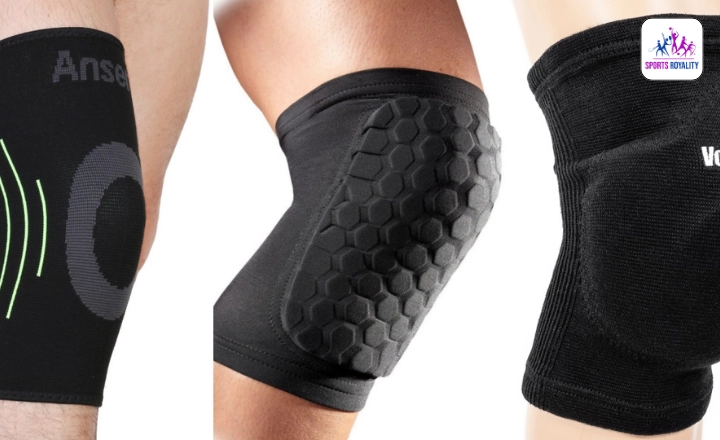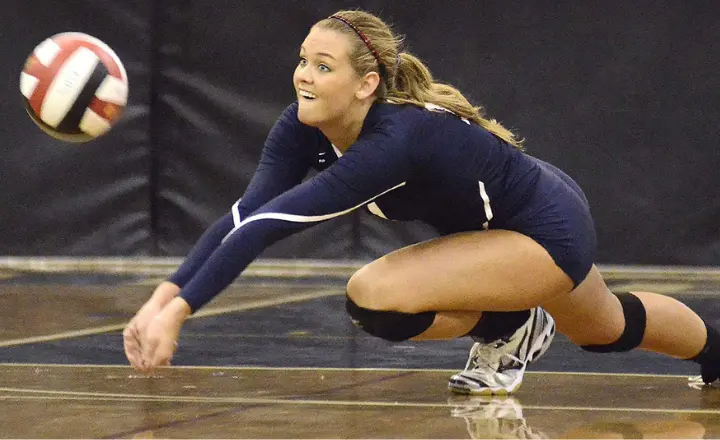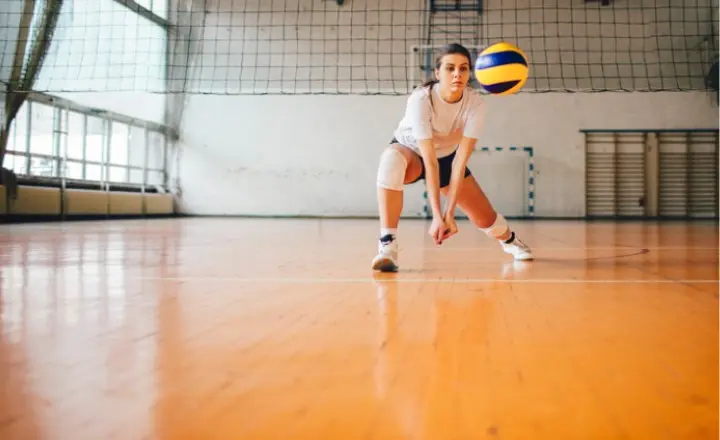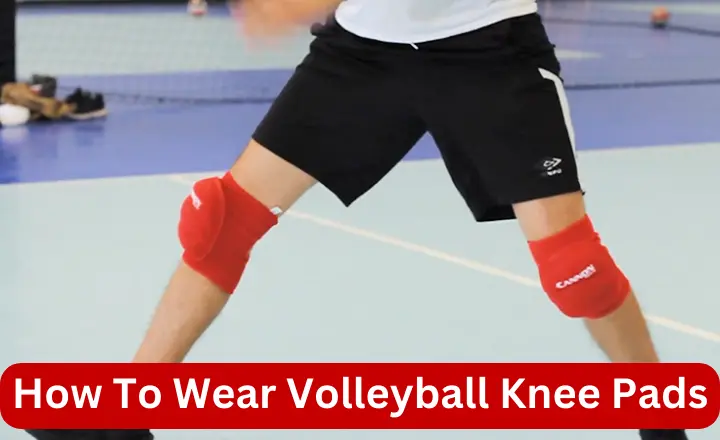Volleyball is a thrilling and fast-paced sport that demands quick movements, explosive jumps, and frequent dives. With these intense actions comes the risk of scraping or injuring your knees on the hard court surface. That’s where volleyball knee pads come into play. These essential pieces of protective gear prevent painful injuries and provide players with stability and confidence during the game.
Knowing how to wear knee pads for volleyball is crucial for maximum effectiveness and comfort. We will guide you through step-by-step instructions on how to wear volleyball knee pads correctly, ensuring you stay safe and perform at your best on the court.
The Proper Way To Wear Volleyball Knee Pads
Knowing the correct way to wear knee pads can enhance your performance on the court and protect you from potential injuries.
- Having the upper half of your knee completely exposed is perfectly fine, and there is a logical explanation for this. When engaging in physical activities or sports requiring agility and flexibility, such as running or playing soccer, exposing your knee’s upper half allows for a more fantastic range of motion.
- We have yet another textbook demonstrating how knee pads should be worn correctly. They are positioned nicely and securely on the knees, just where they should be, covering the upper shins for maximum protection.
Why Do Volleyball Players Wear Their Knee Pads Below Their Knees?
Volleyball players wear their knee pads below their knees for a few reasons.

- Wearing knee pads below the knees allows for better mobility and flexibility during gameplay. By positioning the knee pads lower on the leg, players can bend and move their knees more freely without any restrictions.
- Wearing knee pads below the knees protects vulnerable leg areas, such as the shins. Volleyball is a fast-paced sport that involves diving and sliding on the floor, which puts these areas at risk of injury. Players can ensure adequate knee and shin protection by wearing knee pads lower on the leg.
- Some volleyball players may find that wearing knee pads below their knees offers a more comfortable fit. The snugness of the knee pad around the calf can help keep it in place during intense movements, preventing it from slipping or shifting during play.
Each player may have their preference regarding where to wear their knee pads based on comfort and personal preference.
Should Volleyball Players Wear Ankle Braces
As we know, Volleyball is a high-impact sport that places significant stress on the ankles due to constant jumping, diving, and sudden lateral movements. While some argue that wearing ankle braces restricts mobility and hinders performance, the potential benefits should not be overlooked. Ankle injuries are common in Volleyball, and wearing braces can provide crucial support and stability to prevent sprains or reduce their severity.
The psychological impact of wearing ankle braces should be considered. Knowing that their ankles are protected can give players added confidence to push themselves harder without fear of injury. It’s also worth considering that top-level athletes often use ankle braces preventively during training. While volleyball players must build strength and flexibility in their ankles through targeted exercises, the additional protection offered by wearing ankle braces can be a game-changer in preventing debilitating injuries.
Avoid Pulling Them Too High Up On Your Knees
Pulling your socks too high up on your knees can create an unflattering silhouette, making your legs appear shorter or thicker than they are. To avoid this, consider opting for slightly shorter socks that hit just below the knee instead of pulling them up. This subtle adjustment will give you a more balanced and elongated look.
Be mindful of the fabric and thickness of your socks when attempting this trend. Thicker materials can add unnecessary bulk to your legs, while thinner fabrics may need more coverage or support. Finding the right balance between style and functionality is key to nailing this trend without sacrificing comfort.

Should You Wear Knee Pads At All?
Whether or not you should wear knee pads ultimately depends on your circumstances and preferences. Engage in activities that strain your knees, such as skateboarding, rollerblading, or certain types of exercise. Knee pads can provide an extra layer of protection and help prevent injuries.
Wearing knee pads may not be necessary if you lead a relatively sedentary lifestyle or participate in low-impact activities.
Consider factors such as your age, overall health, and the level of risk associated with the activities you engage in. It’s also worth noting that knee pads can sometimes restrict movement and be uncomfortable to wear for extended periods. It’s essential to listen to your body and make an informed decision based on what feels right.
How Tight Should Volleyball Knee Pads Be?
It is vital to find a balance between comfort and snugness. The knee pads should fit securely on your knees without being too tight or restrictive. If the knee pads are too loose, they may slide down during play and not provide adequate protection. If they are too close, they can restrict movement and cause discomfort.
To ensure a proper fit, try different sizes and brands of knee pads to find the most comfortable for you. The knee pads should be snug enough to stay in place during intense movements but not so tight that they cut off circulation or cause pain. It is also helpful to look for knee pads with adjustable straps or padding options, as this allows you to customize the fit to your liking.
Finding the right fit for volleyball knee pads may require trial and error. It is essential to prioritize comfort and protection when choosing knee pads, as these factors can significantly impact your performance on the court.

Do You Wear Knee Pads For Sand Volleyball?
No, wearing knee pads for sand volleyball is generally not necessary. The soft and forgiving nature of the sand provides a natural cushioning effect, reducing the impact on your knees while playing. Wearing knee pads may be unnecessary or comical by other players like Libero.
Suppose you have a pre-existing knee injury or are prone to knee problems. Use knee braces or other protective gear to provide additional support and stability during the game.
The decision to wear knee pads for sand volleyball depends on personal preference and individual circumstances. If you feel more comfortable and confident with knee pads on, then go ahead and wear them. Remember that most players do not use them due to the nature of playing on sand.
Final Words For How To Wear Volleyball Knee Pads
Wearing volleyball knee pads is essential for protecting yourself from injuries and ensuring optimal performance on the court. Remember How To Wear Volleyball Knee Pads fit properly, provide adequate cushioning and support, and allow for freedom of movement.
Take the time to properly adjust and secure your knee pads before each game or practice session. Regularly inspect your knee pads for wear or damage and replace them as necessary.
By following these tips and incorporating knee pad usage into your volleyball routine, you can stay safe and confident while playing the game you love. So gear up with your knee pads and dominate the volleyball court.
FAQ’s:
Are Volleyball knee pads meant to be Tight?
Yes, volleyball knee pads are meant to be tight or slightly snug to stay in place during gameplay. Knee pads provide protection and cushioning for the knees when players dive, slide, or land on the ground.
Is it OK to dry volleyball knee pads?
Yes, it is generally OK to dry volleyball knee pads. Most knee pads are made from materials that can withstand being dried, such as neoprene or polyester.

